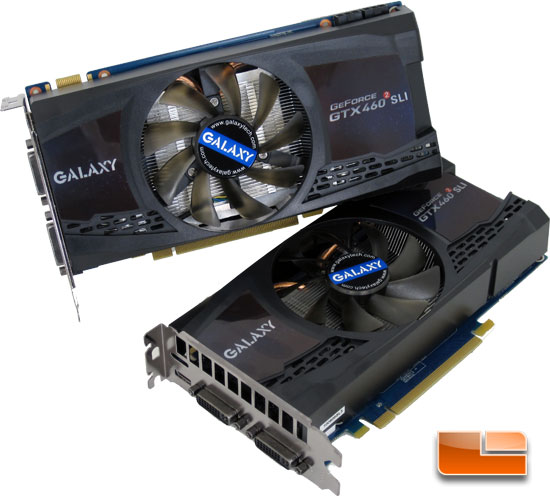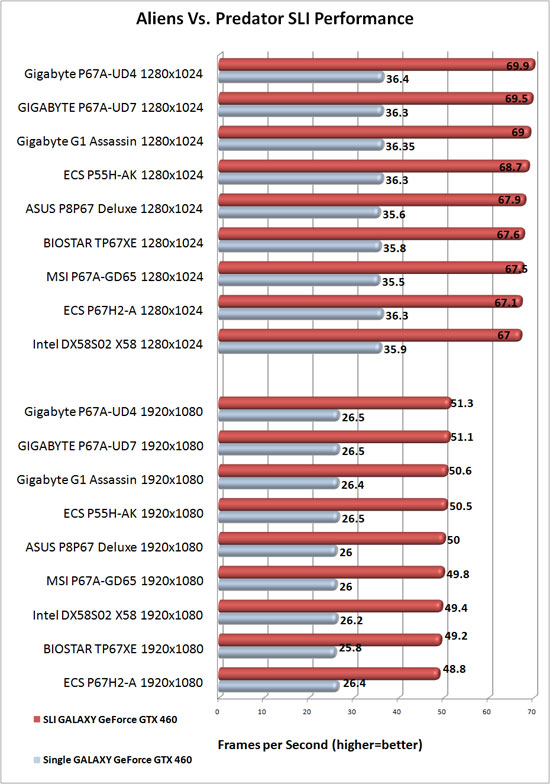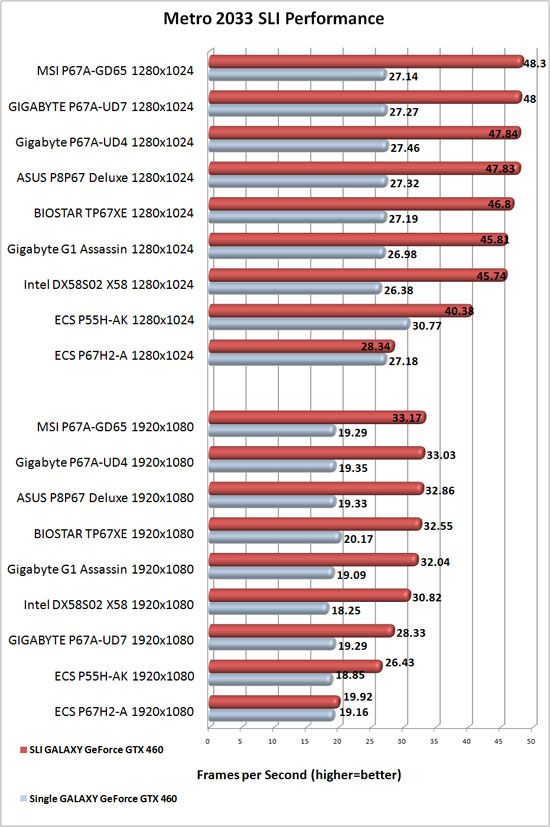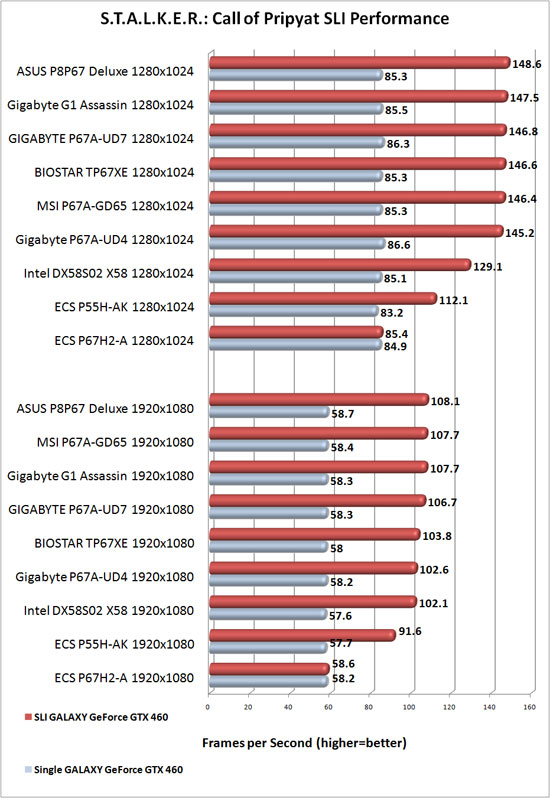GIGABYTE P67A-UD7-B3 Motherboard Review
NVIDIA SLI Performance Scaling

Since the release of the Intel P67 chipset, we decided to change a few things up in our testing. The next two pages are all about the scaling of multiple GPU’s in our systems. First off, we are going to test how well the P67 chipset scales multiple NVIDIA cards. In order to do this we contacted our friends over at GALAXY and they were kind enough to send over a pair of NVIDIA GeForce GTX 460 1Gb graphics cards that are available in a two card SLI kit.

The GIGABYTE P67A-UD7-B3 is right up at the top of the charts at both 1280×1024 and 1920×1080. At 1280×1024 the P67A-UD7-B3 had a single card performance of 36.3 frames per second, adding in the second Galaxy GeForce GTX 460 1GB in SLI the performance jumped to 69.5 frames per second. That is a performance boost of 91.5%. AT 1920×1080 the P67A-UD7-B3 started with a single Galaxy GeForce GTX 460 at 26.5 frames per second and increased to 51.1 frames per second for a gain of 92.8%.

The GIGABYTE P67A-UD7-B3 is near the top of the charts once again, at least at 1280×1024. At 1280×1024 the single card performance was 27.27 frames per second and adding in the second Galaxy GeForce GTX 460 brought the performance up to 48 frames per second. That is a gain of 76%. At 1920×1080 the GIGABYTE P67A-UD7 had a single card performance of 19.29 frames per second, tossing in the second Galaxy GeForce GTX 460 brought the performance up to 28.33 frames per second. That is nearly 5 frames per second slower than the GIGABYTE P67A-UD4.

The GIGABYTE P67A-UD7-B3 had a solid performance in S.T.A.L.K.E.R.: Call of Pripyat. At 1280×1024 the single Galaxy GeForce GTX 460 was able to cruise along with an average of 86.3 frames per second. Tossing in the second card the performance jumped to 146.8 frames per second for a gain of 70.1%. When we increase the resolution to 1920×1080 the single Galaxy GeForce GTX 460 pulled out an average of 58.3 frames per second while adding in a second card brought the average up to 106.7 frames per second. That is a gain of 83% in SLI.

Comments are closed.